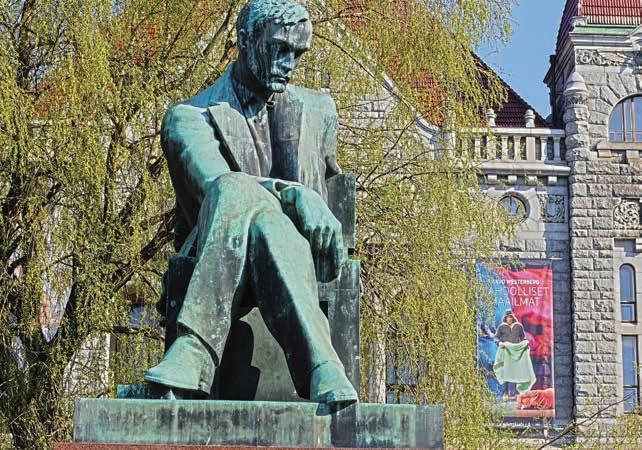
4 minute read
Art in the workplace
the battle to make businesses Why art is a secret weapon in attractive — and productive
Wellbeing in the workplace comes from many areas, and eye candy is one of them. PATRICK MCCRAE investigates for BV.
Advertisement
IT WAS Florecnce Nightingale who recognised the positive impact of art on our physical and mental health 160 years ago — long before the term “wellbeing” had been coined.
But the potential to harness the power of art to build more creative, productive workplaces is rarely discussed. The character of a workplace affects job satisfaction, motivation and mood — and art needs to become part of this conversation.
Some may be sceptical of the claims, but the concept is supported by solid evidence. Doctor Oshin Vartanian, from the University of Toronto, has conducted research on the neuroscience of aesthetics and creativity. He found that art activates the brain’s default mode network — the area associated with original thinking — helping us to retrieve memories and think about the future, as well as engaging our pleasure and reward systems.
In 2014, a survey of 7,000 employees for the Leesman Index, a comprehensive study of workplaces, found that one in two employees thought art was an important part of their workplace environment — but 85 percent were dissatisfied with the artwork in their offices.
Patrick McCrae
Research by another doctor — Jenny Thomas, director of Performance Consultancy — found that while many organisations installed artwork in their reception areas or meeting rooms, few had introduced it to the main office.
Seven out of 10 workplaces had no artwork installed, and 95 percent of employees could not see any art from their workstation. Thomas conducted studies by changing sensory aspects of a workplace, including temperature and air movement, and providing access to a new “breakout” space. But — unsurprisingly, given the topic here — the biggest impact came from introducing artwork.
Staff said they were more alert in the afternoons, avoiding the traditional post-lunch dip in concentration. They felt the art promoted social interaction.
A study by the British Council For Offices in 2013 found that 61 percent of employees believed artwork inspired them to think and work more creatively. Research by ARTIQ suggested that people were 14.3 percent more productive in an art-adorned office.
Art enables positive cognitive distraction and creates spaces that are active and connective. It engages staff and clients. It has this impact because it is innately human, encouraging the viewer


All public areas, not just workplaces, can benefit from the inclusion of creative works
to engage and find meaning. But thought must be given to the relevance of art to its specific environment. Office art should tell a story and connect to brand values and heritage, creating a clear narrative.
Global law firm Mayer Brown recently worked with ARTIQ to develop an art collection for its London office, following an extensive modernisation and refurbishment programme.
An art committee was set up, bringing together a group of partners and employees to choose paintings, sculpture, prints and street art for the office.
It was developed around the themes of diversity and equality to reflect Mayer Brown’s commitment to promoting a diverse workforce — 86 percent of the art was created by women. Artists from outside the UK, or those who have recently graduated from art schools and colleges and are trying to build a career, are also represented.
The art collection has become a talking point for staff and offers a visual representation of the firm’s values. The links can easily be explained to visitors and prospective clients.
By supporting emerging artists, the firm is also acting as a patron, supporting the creative economy at a time of increasing strain. UK residents and workers on average invest 40 percent less on art than their counterparts on the Continent.
RENTAL MODEL Investec, the international banking and wealth management group, wanted art at two of its London offices to complement the design by architectural firm tp bennett.
Reflecting Investec’s heritage, the collection features the work of dynamic artists from South Africa and London.
ARTIQ catalogued the collection and worked closely with Investec to design an online auction platform, giving employees the opportunity to purchase the artwork that has been part of their working environment. The initiative worked on two levels: as an effective means of employee engagement — including a pop-up exhibition for the new collection — and as a way of supporting contemporary artists.
Investing in an office art collection might sound like the preserve of big corporates, but an art rental model allows any business to host an expertly curated collection without breaking the bank: say £1,600 a month.
The collection will be refreshed every few months, making it a continual talking point for staff and visitors.
Above all, an art collection is a compelling way for a business to articulate its values and to express its identity to the wider world. It's also nice just to see it hanging there...
* Patrick McCrae is chief executive of art consultancy ARTIQ










